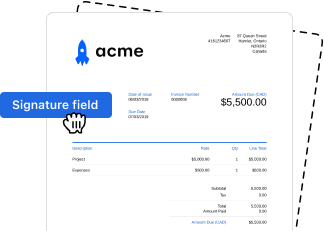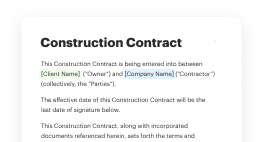eSignature Lawfulness for Nonprofit in European Union
- Quick to start
- Easy-to-use
- 24/7 support
Simplified document journeys for small teams and individuals




We spread the word about digital transformation
Why choose airSlate SignNow
-
Free 7-day trial. Choose the plan you need and try it risk-free.
-
Honest pricing for full-featured plans. airSlate SignNow offers subscription plans with no overages or hidden fees at renewal.
-
Enterprise-grade security. airSlate SignNow helps you comply with global security standards.







Your complete how-to guide - esignature lawfulness for nonprofit in european union
eSignature Lawfulness for Nonprofit in European Union
When handling eSignatures for your nonprofit organization in the European Union, it's crucial to ensure compliance with the local laws and regulations. Understanding the lawfulness of eSignatures can help streamline your document processes and ensure the legality of your agreements.
How to Use airSlate SignNow for eSigning Documents:
- Launch the airSlate SignNow web page in your browser.
- Sign up for a free trial or log in.
- Upload a document you want to sign or send for signing.
- If you're going to reuse your document later, turn it into a template.
- Open your file and make edits: add fillable fields or insert information.
- Sign your document and add signature fields for the recipients.
- Click Continue to set up and send an eSignature invite.
airSlate SignNow empowers non-profit organizations in the European Union to streamline their document processes with ease and ensure compliance with eSignature laws. With its user-friendly interface and cost-effective solution, airSlate SignNow is a great tool for nonprofits looking to improve efficiency.
Experience the benefits of airSlate SignNow today and take your document management to the next level!
How it works
Rate your experience
What is the esignature lawfulness for nonprofit in european union
The eSignature lawfulness for nonprofits in the European Union is governed by the eIDAS Regulation, which establishes a legal framework for electronic signatures. This regulation ensures that electronic signatures are legally recognized and can be used in a similar manner to handwritten signatures. Nonprofits must understand that eSignatures can be employed for various documents, including contracts, agreements, and consent forms, provided they meet specific criteria outlined in the regulation.
How to use the esignature lawfulness for nonprofit in european union
To effectively use eSignatures within the nonprofit sector in the European Union, organizations should first ensure compliance with eIDAS requirements. This involves selecting a qualified eSignature solution that offers advanced security features. Nonprofits can then create documents in a digital format, send them for signature, and track the signing process in real time. It is essential to maintain records of signed documents to ensure accountability and compliance with legal standards.
Steps to complete the esignature lawfulness for nonprofit in european union
Completing the eSignature process for nonprofits involves several key steps:
- Prepare the document in a digital format.
- Choose a reliable eSignature platform that complies with eIDAS.
- Upload the document to the platform.
- Add signature fields where necessary.
- Send the document to the intended signers via email.
- Track the signing status and receive notifications upon completion.
- Store the signed document securely for future reference.
Legal use of the esignature lawfulness for nonprofit in european union
The legal use of eSignatures for nonprofits in the European Union is supported by the eIDAS Regulation, which classifies eSignatures into three categories: simple, advanced, and qualified. Each type has different legal implications and levels of security. Nonprofits should assess the nature of their documents to determine which type of eSignature is appropriate. For high-stakes agreements, a qualified eSignature may be necessary to ensure maximum legal validity.
Security & Compliance Guidelines
Nonprofits must adhere to strict security and compliance guidelines when using eSignatures. This includes ensuring that the eSignature solution provides encryption, secure storage, and authentication measures to verify the identity of signers. Regular audits and compliance checks should be conducted to align with both eIDAS and GDPR requirements, safeguarding sensitive information and maintaining trust with stakeholders.
Documents You Can Sign
Nonprofits can utilize eSignatures for a variety of documents, including:
- Contracts and agreements
- Grant applications
- Consent forms
- Policies and procedures
- Financial documents
Using eSignatures for these documents streamlines processes, reduces paper usage, and enhances efficiency.
Sending & Signing Methods (Web / Mobile / App)
Nonprofits can send and sign documents using multiple methods, including web applications, mobile devices, and dedicated apps. This flexibility allows users to complete transactions from anywhere, making it easier to engage with stakeholders and partners. The eSignature platform should provide an intuitive interface for both senders and signers, ensuring a smooth experience regardless of the method chosen.
-
Best ROI. Our customers achieve an average 7x ROI within the first six months.
-
Scales with your use cases. From SMBs to mid-market, airSlate SignNow delivers results for businesses of all sizes.
-
Intuitive UI and API. Sign and send documents from your apps in minutes.
FAQs
-
What is the esignature lawfulness for nonprofit in European Union?
The esignature lawfulness for nonprofit in European Union is governed by the eIDAS Regulation, which ensures that electronic signatures are legally recognized across member states. Nonprofits can confidently use electronic signatures for their documents, provided they comply with the necessary regulations. This lawfulness streamlines operations and enhances efficiency for nonprofit organizations.
-
How does airSlate SignNow ensure compliance with esignature lawfulness for nonprofit in European Union?
airSlate SignNow is designed to comply with the eIDAS Regulation, ensuring that all electronic signatures are legally binding and secure. Our platform provides features such as audit trails and secure storage, which are essential for maintaining compliance. This allows nonprofits to focus on their mission while trusting that their documents are handled lawfully.
-
What are the benefits of using airSlate SignNow for nonprofits regarding esignature lawfulness for nonprofit in European Union?
Using airSlate SignNow provides nonprofits with a cost-effective solution that simplifies document management while ensuring esignature lawfulness for nonprofit in European Union. Benefits include faster turnaround times, reduced paper usage, and enhanced security. Nonprofits can streamline their processes and improve collaboration with stakeholders.
-
Are there any costs associated with using airSlate SignNow for nonprofits?
Yes, airSlate SignNow offers various pricing plans tailored for nonprofits, ensuring affordability while maintaining compliance with esignature lawfulness for nonprofit in European Union. Our pricing is transparent, with no hidden fees, allowing organizations to choose a plan that fits their budget. Nonprofits can also take advantage of discounts and special offers.
-
What features does airSlate SignNow offer to support esignature lawfulness for nonprofit in European Union?
airSlate SignNow includes features such as customizable templates, secure electronic signatures, and comprehensive audit trails, all of which support esignature lawfulness for nonprofit in European Union. These features help nonprofits manage their documents efficiently while ensuring compliance with legal standards. Additionally, our user-friendly interface makes it easy for all team members to adopt.
-
Can airSlate SignNow integrate with other tools used by nonprofits?
Yes, airSlate SignNow offers seamless integrations with various tools commonly used by nonprofits, such as CRM systems and project management software. This enhances the workflow and ensures that all documents signed electronically comply with esignature lawfulness for nonprofit in European Union. Integrations help nonprofits maintain efficiency and streamline their operations.
-
How secure is airSlate SignNow in terms of esignature lawfulness for nonprofit in European Union?
airSlate SignNow prioritizes security by employing advanced encryption and secure data storage practices, ensuring compliance with esignature lawfulness for nonprofit in European Union. Our platform is designed to protect sensitive information and maintain the integrity of signed documents. Nonprofits can trust that their data is safe and secure.
Related searches to esignature lawfulness for nonprofit in european union
Join over 28 million airSlate SignNow users
Get more for esignature lawfulness for nonprofit in european union
- Please provide the document you would like me to ...
- Master your mail signature format with airSlate SignNow
- Create a clean email signature effortlessly with ...
- Unlock the power of our free e-signature tool
- Create your HTML signature seamlessly with airSlate ...
- Transform your emails with email signature software for ...
- Compose signature effortlessly with airSlate SignNow
- Effortless file signing for your business needs




























